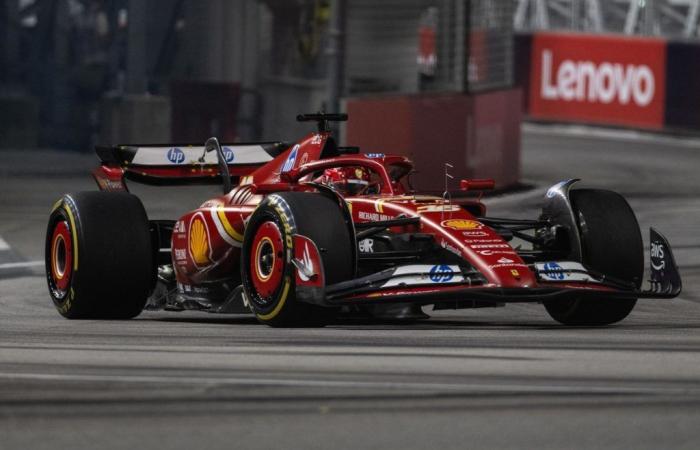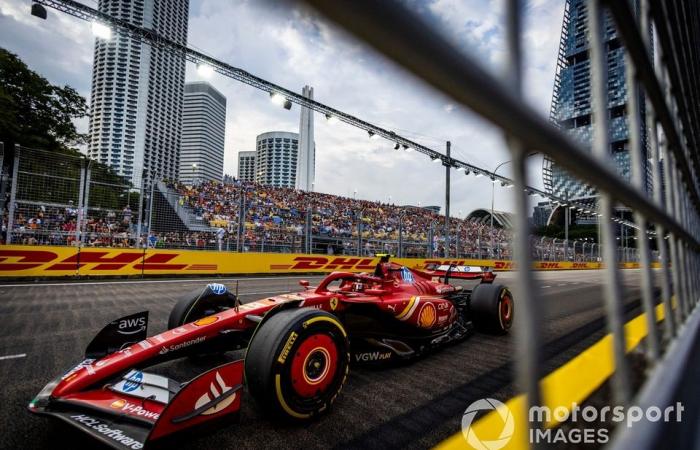Ferrari brought to Spain an advanced floor, building on the one already used since Imola, the main consequence of which on the car’s behavior was a resurgence of bounce problems in high-speed corners. According to Jock Clear, the team’s performance engineer, these issues have been understood and resolved, but the process will automatically lead to even more issues.
The difficulties encountered in Barcelona and then forced the Scuderia to postpone the introduction of a new floor which was to make its appearance at Silverstone, then to review the geometry of the underside of its car for the Hungarian GP. Performance-wise, Ferrari has since clearly regained momentum with a victory at Monza, then a very efficient car in Baku and Singapore even if the fortunes of the structure have been varied.
Explaining the process for identifying problems from Catalonia, Jock Clear said Ferrari had to investigate a “anomalies” between the data from the wind tunnel and what was observed on the track, before being able to continue to move forward on the development of the SF-24. “You’re never completely confident, but I think it’s a good representation of how everyone’s development fluctuates.”said the British engineer.
“But you’re probably asking the same questions [aux autres équipes] : have you lost your way?
After Spain, we didn’t feel like we had lost our way, but there was an anomaly between what was happening in the wind tunnel and what we were seeing on the track, and we had to fix it. That’s simply what the process is: when you see an anomaly, you have to overcome it, try to understand it, and then get back on track.”
Charles Leclerc ahead of Fernando Alonso during the Singapore GP.
Photo de: Glenn Dunbar / Motorsport Images
“I think what you’ve seen since then is we figured it out, we got back on track, [et que] we just have to stay alert for the next anomaly, which is sure to present itself, because that’s the current process.”
“So it’s not a question of saying that sometimes development works and sometimes it doesn’t: the development process is precisely about testing something new every week. We are convinced that our process works and that we have the situation under control. It does not All we have to do is wait for the next banana peel.”
Clear also discussed the challenges behind developing floor geometry under current rules, including the limited effectiveness of wind tunnels when it comes to measuring how a car behaves in different dynamic conditions. He particularly insisted on the importance of differences in ride height, which accentuate the differences in the level of downforce generated by ground-effect F1 cars.
“Since we reintroduced these ground effect cars, they have presented challenges that have… put simply, where the car is far off the ground and the floor doesn’t generate a lot of downforce of its proximity to the ground, then the wind tunnel can be quite precise. But as soon as it comes to knowing what happens on a vibrator, what happens when you bounce, the wind tunnel cannot do it.
Carlos Sainz, Ferrari SF-24
Photo de: Sam Bloxham / Motorsport Images
“We can bounce the car up and down. But of course then the data is confusing. That said, no matter how confusing that data is on the track, the driver has to drive it. There is some level of correlation between the wind tunnel and the track, and it is difficult to obtain 100% fidelity.”
“You will always have these anomalies and with ground effect, the anomalies are greater because the proximity to the ground becomes that much more powerful as soon as ground effect is felt. When ground effect is zero, you lose all your downforce, and when it goes up five millimeters, you get a lot of downforce and you end up in this peak area at the floor and everyone faces that problem all the time.”
With Jake Boxall-Legge and Jonathan Noble







